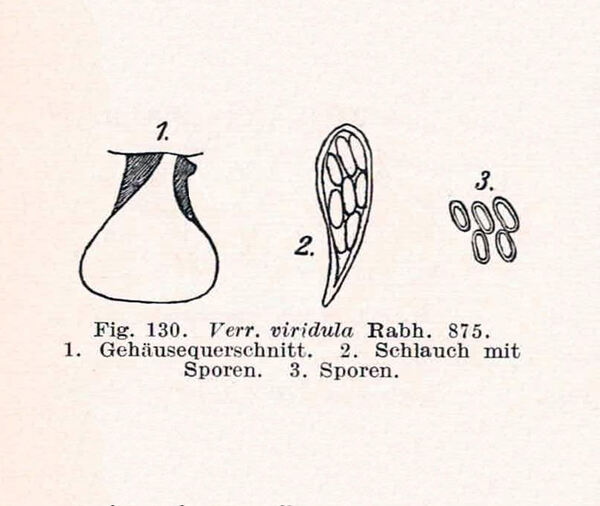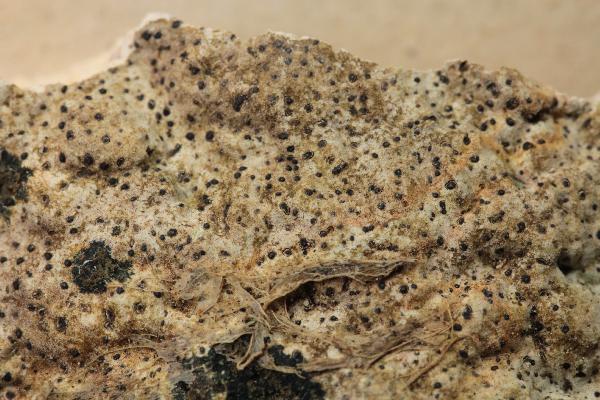Verrucaria viridula (Schrad.) Ach.
Meth. Lich. Suppl.: 16, 1803. Basionym: Endocarpon viridulum Schrad. - Spicil. Fl. Germ., 1: 192, 1794.
Synonyms: Amphoridium leightonii (A. Massal.) Arnold; Amphoridium polygonium (Körb.) Servít; Amphoridium viridulum (Schrad.) Servít; Verrucaria dermatoidea (A. Massal. ex Anzi) Servít; Verrucaria griseorubens Mig.; Verrucaria leightonii A. Massal. non Hepp; Verrucaria obductilis (Nyl.) Zschacke; Verrucaria polygonia Körb.; Verrucaria veronensis A. Massal.; Verrucaria veronensis f. dermatoidea A. Massal. ex Anzi
Distribution: N - VG (Castello 2002, Martellos & Castello 2004), Frl (Tretiach & Hafellner 2000), Ven (Lazzarin 2000b), TAA (Nascimbene & al. 2022), Lomb (Valcuvia & Truzzi 2007b), Piem (Isocrono & al. 2004), Emil (Bouvet 2008, Fariselli & al. 2020), Lig (Giordani & al. 2016). C - Tosc, Marc, Umb (Ravera & al. 2006, 2006b, Genovesi 2011), Laz (Bartoli & al. 1998, Roccardi 2011), Abr, Sar (Rizzi & al. 2011). S - Camp (Ricciardi & al. 2000, Nimis & Tretiach 2004), Pugl (Nimis & Tretiach 1999), Bas (Nimis & Tretiach 1999), Si (Ottonello & Salone 1994, Ottonello & al. 1994, Grillo 1998, Caniglia & Grillo 2001, Grillo & Caniglia 2004, Grillo & al. 2009, Cataldo & Cannavò 2014).
Description: Thallus crustose, more or less immersed and visible as brownish flecks, or clearly episubstratic and rimose-areolate, dark greenish grey to greenish brown when dry, brighter green when wet. Cortex poorly differentiated or up to 20 μm thick, overlain by a 10-20 μm thick epinecral layer; algal layer up to 100 μm thick, of irregular thickness; medulla poorly developed, dirty white to brownish, usually with many small substrate particles. Perithecia black, half- to almost completely immersed, usually leaving pits when they fall off, the projecting part mostly conical, 0.4-0.7 mm wide, often with a thin thalline layer at base. Involucrellum weakly developed only around the ostiole or reaching to mid-level and then shortly diverging from exciple but not reaching beyond its width; exciple narrowly pear- or bottle-shaped, (0.2-)0.3-0.6 mm across, 0.5-0.75 mm high, the wall at first pale, but soon turning dark brown to black, K+ darker brown; hamathecium of periphyses and periphysoids, interascal filaments absent; hymenial gel hemiamyloid, I+ red (I+ blue at very low concentrations of I), K/I+ blue. Asci 8-spored, clavate, I-, fissitunicate, the wall thickened above, with an ocular chamber, dehiscent by extrusion of an endotunica to form a delicate rostrum, Verrucaria-type. Ascospores 1-celled, hyaline, ellipsoid to broadly ellipsoid, (24-)26-38(-41) x (12-)14-20(-23) μm. Pycnidia black, to 60 μm wide or more, immersed. Conidia simple, straight to slightly curved, 7-10 x c. 1 μm. Photobiont chlorococcoid. Spot tests: K-, C-, KC-, P-, UV-. Chemistry: without lichen substances.
Note: an early coloniser of calciferous substrata, most common on small pebbles, also in urban areas (e.g. on roofing tiles); easily mistaken for V. macrostoma. According to Pykälä & al. (2020), the type material of V. veronensis is morphologically similar to V. viridula, and the species is likely to be conspecific with it.
Growth form: Crustose
Substrata: rocks
Photobiont: green algae other than Trentepohlia
Reproductive strategy: mainly sexual
Commonnes-rarity: (info)
Alpine belt: absent
Subalpine belt: absent
Oromediterranean belt: absent
Montane belt: very rare
Submediterranean belt: common
Padanian area: extremely rare
Humid submediterranean belt: common
Humid mediterranean belt: rather rare
Dry mediterranean belt: extremely rare
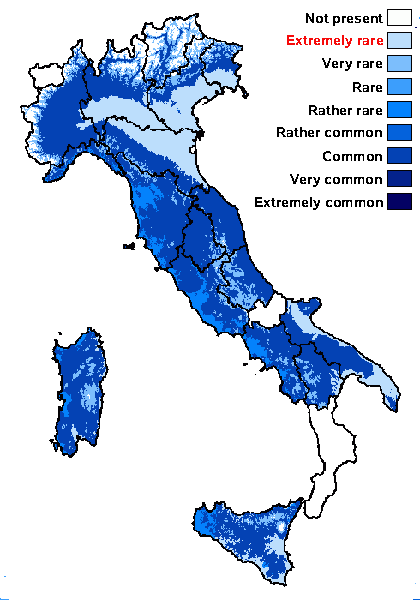
Predictive model
Herbarium samples
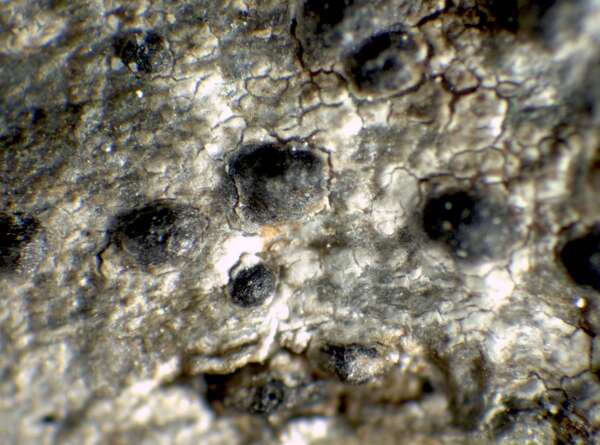

P.L. Nimis; Owner: Department of Life Sciences, University of Trieste
Herbarium: TSB (26483)
2001/12/03
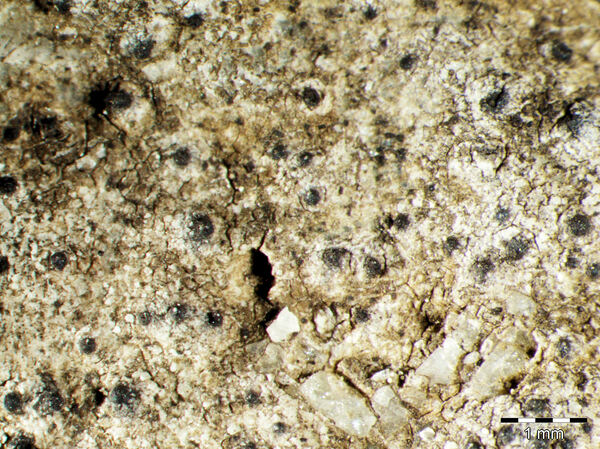
Harrie Sipman – Source http://www.bgbm.fu-berlin.de/sipman/Zschackia/AegeanLichens/CaloplacaAC.htm - As Caloplaca oasis
as V. veronensis
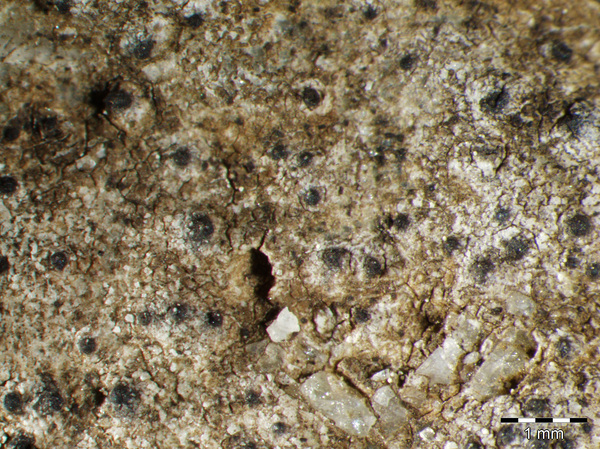
Harrie Sipman – Source http://www.bgbm.fu-berlin.de/sipman/Zschackia/AegeanLichens/CaloplacaAC.htm - As Caloplaca oasis
as V. veronensis
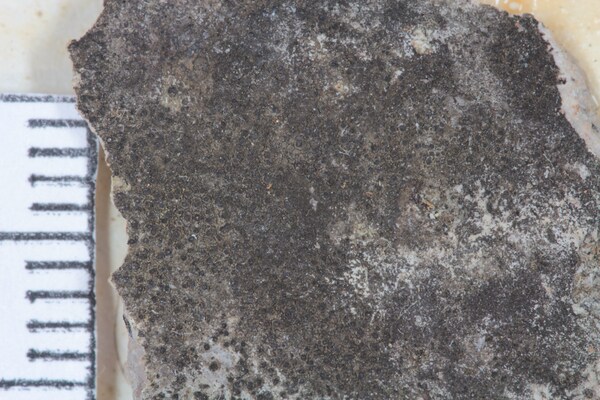
Photo by Maria Zardini, Museo di Storia Naturale di Venezia CC BY-SA 4.0
Ad rupes trachyticas et saxa arenacea in Euganeis.
Trevisan Lichenotheca Veneta 263 as Verrucaria mauroides
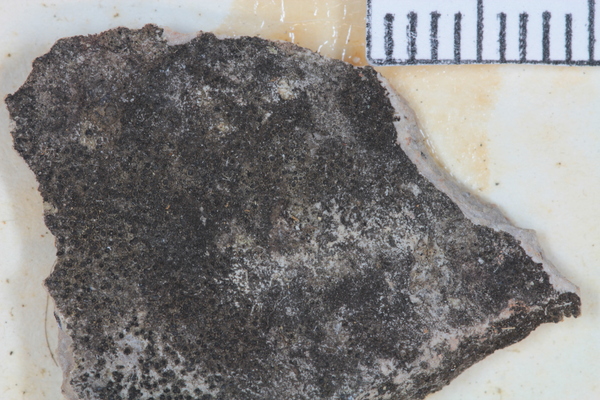
Photo by Maria Zardini, Museo di Storia Naturale di Venezia CC BY-SA 4.0
Ad rupes trachyticas et saxa arenacea in Euganeis.
Trevisan Lichenotheca Veneta 263 as Verrucaria mauroides
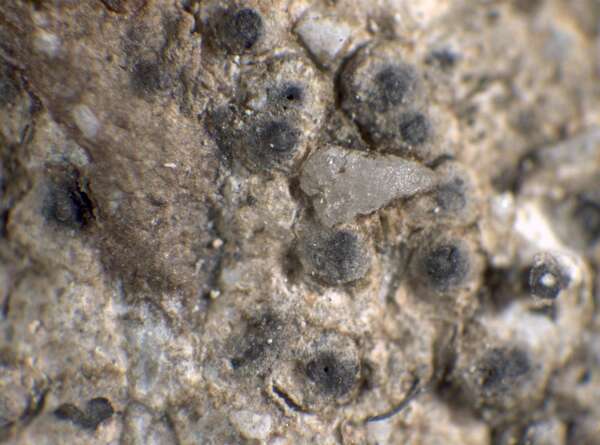

P.L. Nimis; Owner: Department of Life Sciences, University of Trieste
Herbarium: TSB (21992)
2002/02/23
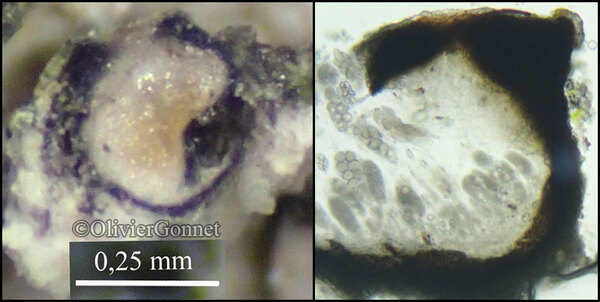
Courtesy Danièle et Olivier Gonnet - Source: https://www.afl-lichenologie.fr/Photos_AFL/Photos_AFL_V/Texte_V/Verrucaria_viridula.htm
France, 8/3/2014 - Poleymieux au Mont d'Or - Rhône

Courtesy Danièle et Olivier Gonnet - Source: https://www.afl-lichenologie.fr/Photos_AFL/Photos_AFL_V/Texte_V/Verrucaria_viridula.htm
France, 8/3/2014 - Poleymieux au Mont d'Or - Rhône
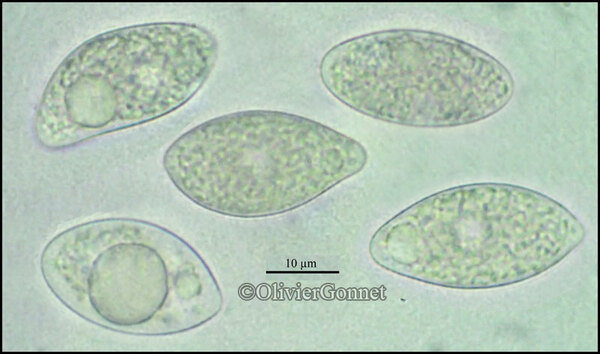
Courtesy Danièle et Olivier Gonnet - Source: https://www.afl-lichenologie.fr/Photos_AFL/Photos_AFL_V/Texte_V/Verrucaria_viridula.htm
France, 8/3/2014 - Poleymieux au Mont d'Or - Rhône
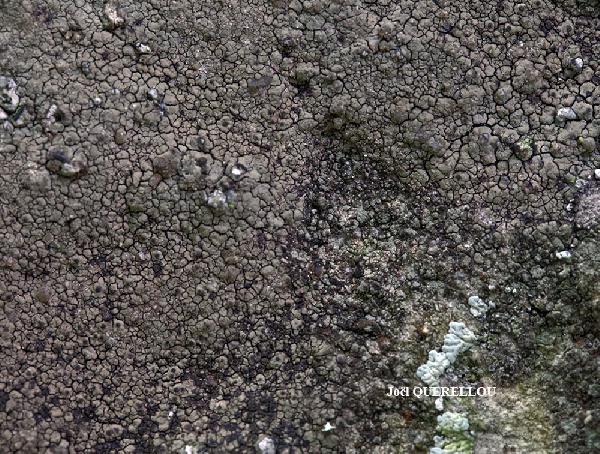
Joël Querellou - Source: http://www.lichensmaritimes.org/index.php?task=fiche&lichen=525&lang=en
France, Loperhet
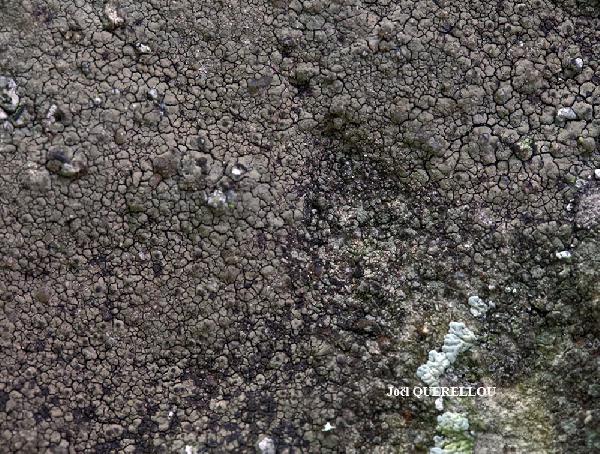
Joël Querellou - Source: http://www.lichensmaritimes.org/index.php?task=fiche&lichen=525&lang=en
France, Loperhet
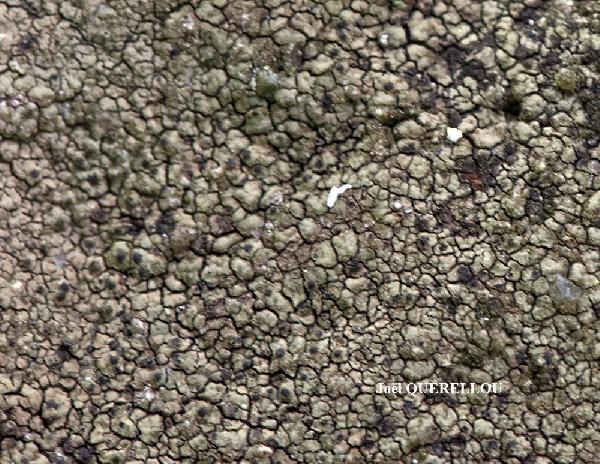
Joël Querellou - Source: http://www.lichensmaritimes.org/index.php?task=fiche&lichen=525&lang=en
France, Loperhet
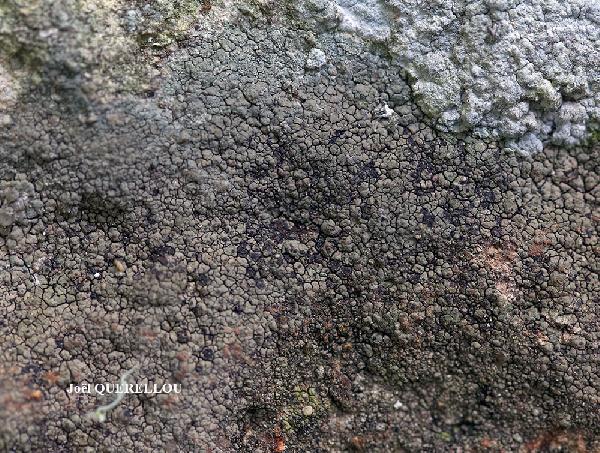
Joël Querellou - Source: http://www.lichensmaritimes.org/index.php?task=fiche&lichen=525&lang=en
France, Loperhet
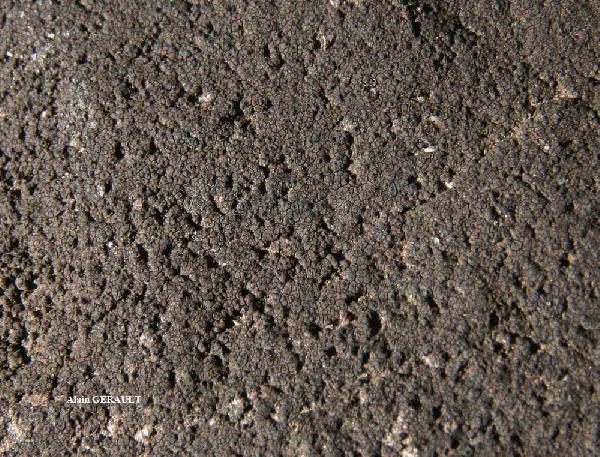
Alain Gerault - Source: http://www.lichensmaritimes.org/index.php?task=fiche&lichen=525&lang=en
France, Sanquer
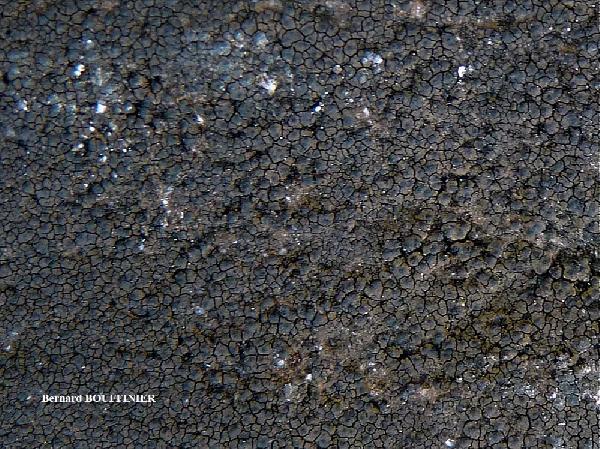
Bernard Bouffinier - Source: http://www.lichensmaritimes.org/index.php?task=fiche&lichen=525&lang=en
France, Sur kersantite Hôpital-Camfrou
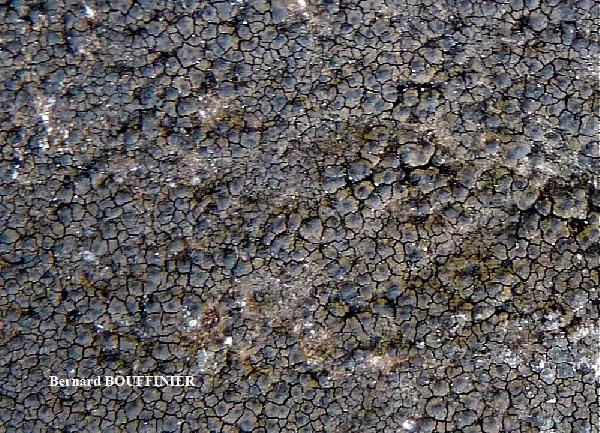
Bernard Bouffinier - Source: http://www.lichensmaritimes.org/index.php?task=fiche&lichen=525&lang=en
France, Sur kersantite Hôpital-Camfrou
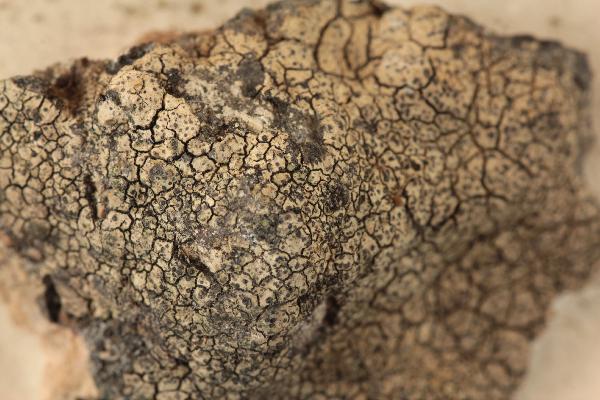
Collezione lichenologica Abramo Massalongo del Museo di Storia Naturale G. Ligabue di Venezia - Autori: Seggi, Linda; Trabucco, Raffaella Proprietà: Fondazione Musei Civici di Venezia - CC BY-NC
Italy, Veneto, circa Urbem Veronam (S. Giuliano) 1855
as Lithoicea viridula
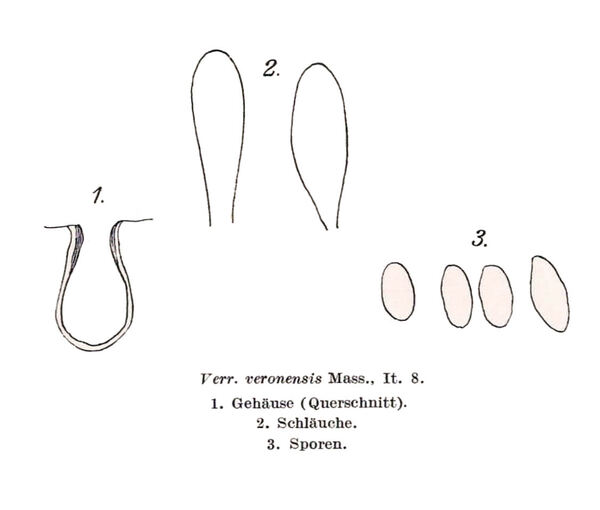
Zschacke, H. (1934) Epigloeaceae, Verrucariaceae und Dermatocarpaceae. In: Dr. L. Rabenhorst‘s Kryptogamen-Flora, Band 9, Abt. 1, Teil 1. Akademische Verlagsgesellschaft, Leipzig, 695 pp. - Public Domain
as V. veronensis
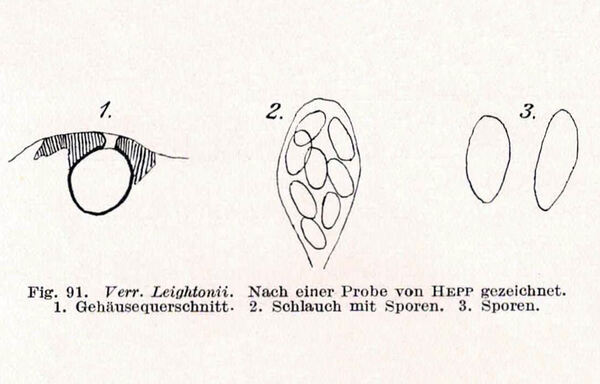
Zschacke, H. (1934) Epigloeaceae, Verrucariaceae und Dermatocarpaceae. In: Dr. L. Rabenhorst‘s Kryptogamen-Flora, Band 9, Abt. 1, Teil 1. Akademische Verlagsgesellschaft, Leipzig, 695 pp. - Public Domain
Growth form: Crustose
Substrata: rocks
Photobiont: green algae other than Trentepohlia
Reproductive strategy: mainly sexual
Commonnes-rarity: (info)
Alpine belt: absent
Subalpine belt: absent
Oromediterranean belt: absent
Montane belt: very rare
Submediterranean belt: common
Padanian area: extremely rare
Humid submediterranean belt: common
Humid mediterranean belt: rather rare
Dry mediterranean belt: extremely rare

Predictive model
| Herbarium samples |


P.L. Nimis; Owner: Department of Life Sciences, University of Trieste
Herbarium: TSB (26483)
2001/12/03

Harrie Sipman – Source http://www.bgbm.fu-berlin.de/sipman/Zschackia/AegeanLichens/CaloplacaAC.htm - As Caloplaca oasis
as V. veronensis

Harrie Sipman – Source http://www.bgbm.fu-berlin.de/sipman/Zschackia/AegeanLichens/CaloplacaAC.htm - As Caloplaca oasis
as V. veronensis

Photo by Maria Zardini, Museo di Storia Naturale di Venezia CC BY-SA 4.0
Ad rupes trachyticas et saxa arenacea in Euganeis.
Trevisan Lichenotheca Veneta 263 as Verrucaria mauroides

Photo by Maria Zardini, Museo di Storia Naturale di Venezia CC BY-SA 4.0
Ad rupes trachyticas et saxa arenacea in Euganeis.
Trevisan Lichenotheca Veneta 263 as Verrucaria mauroides


P.L. Nimis; Owner: Department of Life Sciences, University of Trieste
Herbarium: TSB (21992)
2002/02/23

Courtesy Danièle et Olivier Gonnet - Source: https://www.afl-lichenologie.fr/Photos_AFL/Photos_AFL_V/Texte_V/Verrucaria_viridula.htm
France, 8/3/2014 - Poleymieux au Mont d'Or - Rhône

Courtesy Danièle et Olivier Gonnet - Source: https://www.afl-lichenologie.fr/Photos_AFL/Photos_AFL_V/Texte_V/Verrucaria_viridula.htm
France, 8/3/2014 - Poleymieux au Mont d'Or - Rhône

Courtesy Danièle et Olivier Gonnet - Source: https://www.afl-lichenologie.fr/Photos_AFL/Photos_AFL_V/Texte_V/Verrucaria_viridula.htm
France, 8/3/2014 - Poleymieux au Mont d'Or - Rhône

Joël Querellou - Source: http://www.lichensmaritimes.org/index.php?task=fiche&lichen=525&lang=en
France, Loperhet

Joël Querellou - Source: http://www.lichensmaritimes.org/index.php?task=fiche&lichen=525&lang=en
France, Loperhet

Joël Querellou - Source: http://www.lichensmaritimes.org/index.php?task=fiche&lichen=525&lang=en
France, Loperhet

Joël Querellou - Source: http://www.lichensmaritimes.org/index.php?task=fiche&lichen=525&lang=en
France, Loperhet

Alain Gerault - Source: http://www.lichensmaritimes.org/index.php?task=fiche&lichen=525&lang=en
France, Sanquer

Bernard Bouffinier - Source: http://www.lichensmaritimes.org/index.php?task=fiche&lichen=525&lang=en
France, Sur kersantite Hôpital-Camfrou

Bernard Bouffinier - Source: http://www.lichensmaritimes.org/index.php?task=fiche&lichen=525&lang=en
France, Sur kersantite Hôpital-Camfrou

Collezione lichenologica Abramo Massalongo del Museo di Storia Naturale G. Ligabue di Venezia - Autori: Seggi, Linda; Trabucco, Raffaella Proprietà: Fondazione Musei Civici di Venezia - CC BY-NC
Italy, Veneto, circa Urbem Veronam (S. Giuliano) 1855
as Lithoicea viridula

Zschacke, H. (1934) Epigloeaceae, Verrucariaceae und Dermatocarpaceae. In: Dr. L. Rabenhorst‘s Kryptogamen-Flora, Band 9, Abt. 1, Teil 1. Akademische Verlagsgesellschaft, Leipzig, 695 pp. - Public Domain
as V. veronensis

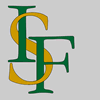 INDEX FUNGORUM
INDEX FUNGORUM
 GBIF
GBIF
 DOLICHENS
DOLICHENS
